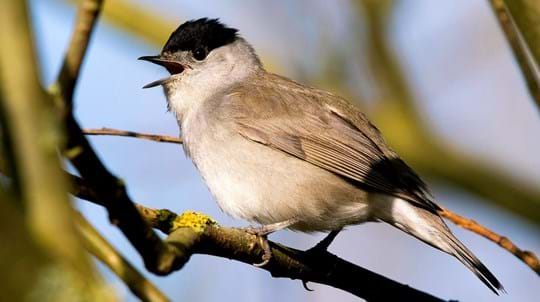
Credit: Mike Wilkes / naturepl.com
How do pied flycatchers breed?
Pied flycatchers are summer migrants, arriving from central Africa to breed in the UK between April and October.
This bird is a cavity nester, using holes in mature trees as well as nest boxes. Six or seven light blue eggs are usually laid which hatch after two weeks of incubation. Chicks then spend another 16-17 days in the nest before fledging.









